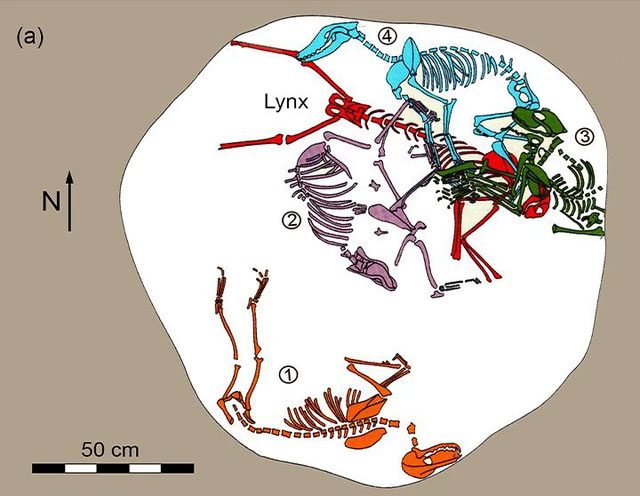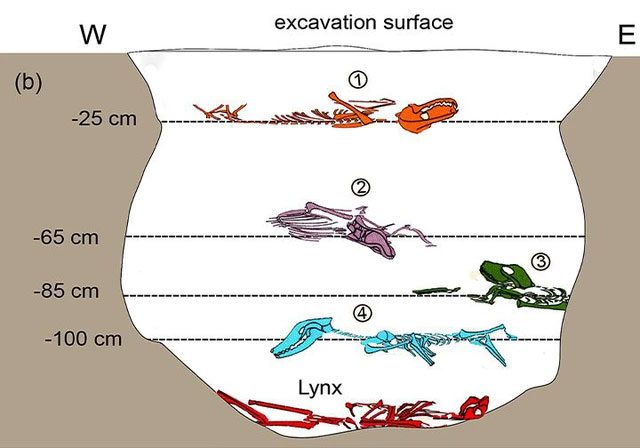An ancient grave with five layers of different burial materials has been discovered in Hungary, featuring a complex arrangement not meant for humans.
According to a publication in the International Journal of Osteoarchaeology, this strange ancient grave is constructed as a burial pit, reaching a depth of 1.4 meters and containing five skeletons.
Preliminary analysis indicates that the remains belong to a lynx and four dogs, interred approximately 1,500 years ago, arranged in a peculiar manner.


Structure of the ancient grave in Hungary – (Photo: International Journal of Osteoarchaeology)
In this grave, the skeleton of the lynx was placed at the deepest point at the bottom of the pit, followed by layers of earth used to create stratification, with the four dogs buried above it, each at varying depths of 100 cm, 85 cm, 65 cm, and 25 cm.
The ancient grave was discovered at the Zamárdi-Kútvölgyi-dűlő site in Central-Western Hungary, an area known as Pannonia, which was once ruled by the Romans.
This site appears to have been a small settlement where the inhabitants contemporary to the grave primarily obtained food from livestock and crops rather than from wild game. Several ancient buildings, pits, wells, and ovens were also found at the location.
Co-author of the study, László Bartosiewicz from Stockholm University (Sweden), stated that it is challenging to explain the context of this ancient burial.
Remains of lynxes have been found at various archaeological sites across Europe and Asia; however, such discoveries are extremely rare since people in these continents typically do not consume lynx meat. The remains mostly consist of lynx claws, which have been interred in human graves.
It is very uncommon to find intact skeletons, as is the case in Hungary.
Archaeologists can only speculate that this burial may have been ritualistic. The deaths of these animals might have occurred following a fierce battle among them.

















































